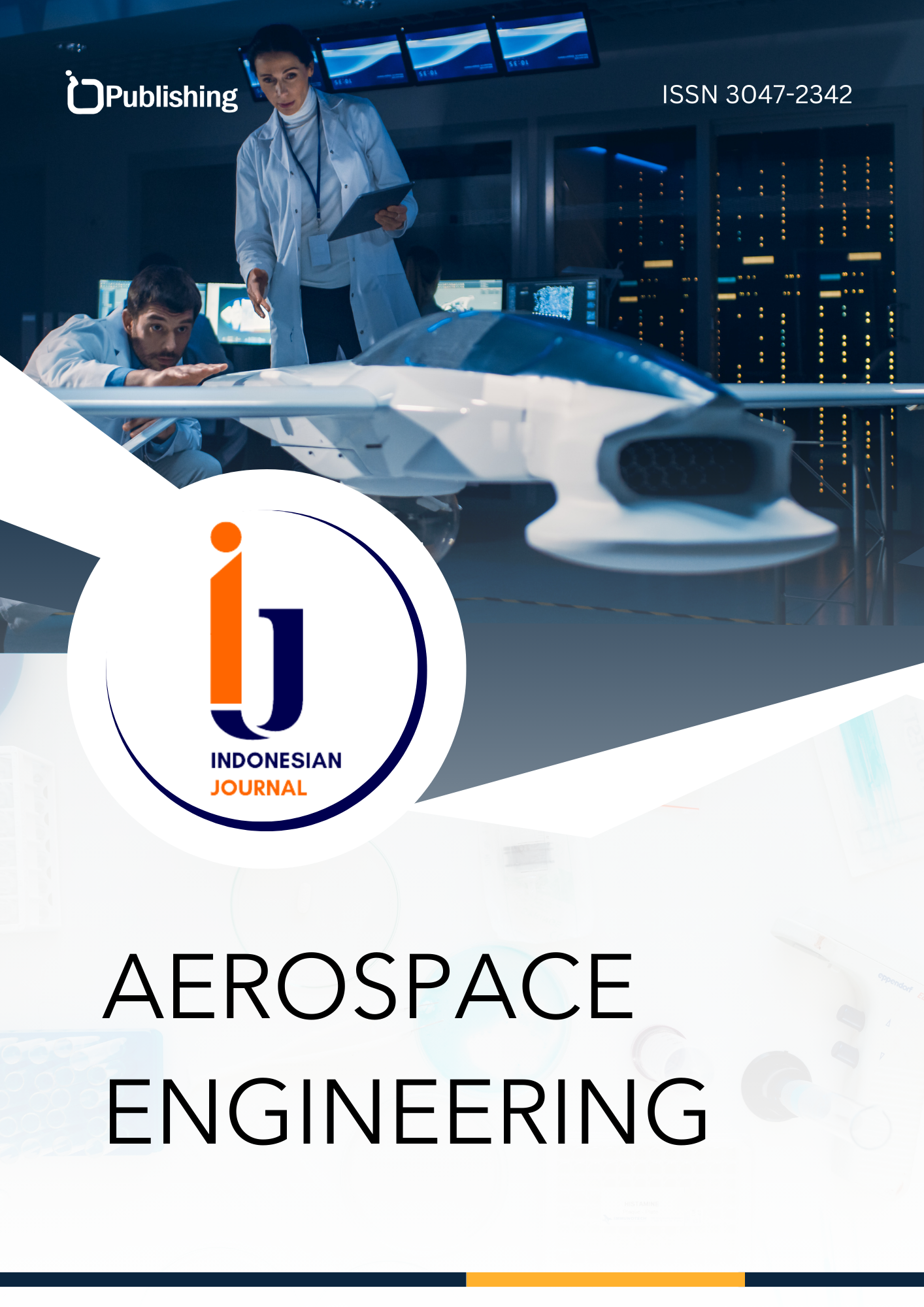Deep Learning-Based Classification of Remote Sensing Images: Challenges, Techniques, and Future Directions in Global Sustainability
DOI:
https://doi.org/10.47134/aero.v1i3.2772Keywords:
Remote Sensing, GIS, EfficientNetB2, MobileNetV2, ResNet-50Abstract
With its high accuracy and efficiency, deep learning has greatly improved the classification of remote sensing (RS) photos. In order to categorize RS photos, this research analyzes the effectiveness of three cutting-edge deep learning models: ResNet-50, EfficientNetB2, and MobileNetV2. The models' accuracy on training and validation data were noted after they were trained and assessed on a dataset containing a variety of situations. Our findings illustrate each model's advantages and disadvantages and shed light on how well suited each is for various RS image categorization applications. The ResNet-50 model performed well in our study, achieving 74.41% training accuracy and 75.00% validation accuracy. With a training accuracy of 74.66% and a higher validation accuracy of 80.33%, the EfficientNetB2 model performed marginally better, demonstrating its strong generalization capabilities. On the other hand, the MobileNetV2 model had severe overfitting, as evidenced by its validation accuracy of 22.79%, which was much lower than its extraordinary high training accuracy of 99.21%. In order to achieve balanced performance between training and validation datasets in remote sensing image classification tasks, these results emphasize the significance of model architecture and regularization strategies. The proposed model can be utilized for sustainable remote sensing based applications in global water, environment and air health.
References
Adegun, A. A., Viriri, S., & Tapamo, J. R. (2023). Review of deep learning methods for remote sensing satellite images classification: Experimental survey and comparative analysis. Journal of Big Data, 10, 93. https://doi.org/10.1186/s40537-023-00772-x
Ahmed, A. A. (2024). Applications of machine learning to water resources management: A review of present status and future opportunities. Journal of Cleaner Production, 441. https://doi.org/10.1016/j.jclepro.2024.140715
Akbar, J. U. M. (2024). A Comprehensive Review on Deep Learning Assisted Computer Vision Techniques for Smart Greenhouse Agriculture. IEEE Access, 12, 4485–4522. https://doi.org/10.1109/ACCESS.2024.3349418
Almashnowi, M. Y. A. (2024). A Hybrid Deep Learning-Based Power Management Strategy for PV-Assisted Desalination Plant. Particle and Particle Systems Characterization. https://doi.org/10.1002/ppsc.202400053
Avtar, R., Komolafe, A. A., Kouser, A., Singh, D., Yunus, A. P., Dou, J., Kumar, P., Gupta, R. D., Johnson, B. A., Minh, H. V. T., Aggarwal, A. K., & Kurniawan, T. A. (2020). Assessing sustainable development prospects through remote sensing: A review. Remote Sensing Applications, 20, 100402. https://doi.org/10.1016/j.rsase.2020.100402
Canicattì, M. (2024). Drones in vegetable crops: A systematic literature review. Smart Agricultural Technology, 7. https://doi.org/10.1016/j.atech.2024.100396
Dataset obtained from: Mahmoudreda55. "Satellite Image Classification Dataset." Kaggle, 2022, https://www.kaggle.com/datasets/mahmoudreda55/satellite-image-classification
Grund, J. (2024). Emotions and transformative learning for sustainability: a systematic review. Sustainability Science, 19(1), 307–324. https://doi.org/10.1007/s11625-023-01439-5
Hamilton, J. R. (2024). Adding External Artificial Intelligence (AI) into Internal Firm-Wide Smart Dynamic Warehousing Solutions. Sustainability (Switzerland), 16(10). https://doi.org/10.3390/su16103908
Li, Y., Zhang, H., Xue, X., Jiang, Y., & Shen, Q. (2018). Deep learning for remote sensing image classification: A survey. Wiley Interdisciplinary Reviews. Data Mining and Knowledge Discovery, 8(6). https://doi.org/10.1002/widm.1264
Manchanda, M. (2024). Optimizing Farm Insect Image Classification: A Transfer Learning Approach with Model Selection. 7th International Conference on Inventive Computation Technologies, ICICT 2024, 657–662. https://doi.org/10.1109/ICICT60155.2024.10544571
Nath, P. C. (2024). Recent advances in artificial intelligence towards the sustainable future of agri-food industry. Food Chemistry, 447. https://doi.org/10.1016/j.foodchem.2024.138945
Patil, R. (2024). Role of Data-Centric Artificial Intelligence in Agriculture. Data-Centric Artificial Intelligence for Multidisciplinary Applications, 159–176. https://doi.org/10.1201/9781003461500-13
Pritt, M., & Chern, G. (2017). Satellite image classification with deep learning. In 2017 IEEE Applied Imagery Pattern Recognition Workshop (AIPR), Washington, DC, USA, pp. 1-7. https://doi.org/10.1109/AIPR.2017.8457969
Rao, U. R. (1991). Remote sensing for sustainable development. Journal of Indian Society of Remote Sensing, 19, 217–235. https://doi.org/10.1007/BF03023969
Rasheed, K. (2024). Industry 4.0 and Construction. AI in Material Science: Revolutionizing Construction in the Age of Industry 4.0, 65–87. https://doi.org/10.1201/9781003438489-4
Sadr, A. V. (2024). Operational greenhouse-gas emissions of deep learning in digital pathology: a modelling study. The Lancet Digital Health, 6(1). https://doi.org/10.1016/S2589-7500(23)00219-4
Satellite Image Classification using Spectral Signature and Deep Learning. (2023). Iraqi Journal of Science, 64(6), 3153-3163. https://doi.org/10.24996/ijs.2023.64.6.42
Shoshany, M., Long, D., & Bonfil, D. (2013). Remote sensing for sustainable agriculture. International Journal of Remote Sensing, 34(17), 6021–6023. https://doi.org/10.1080/01431161.2013.795004
Tehsin, S., Kausar, S., Jameel, A., Humayun, M., & Almofarreh, D. K. (2023). Satellite image categorization using scalable deep learning. Applied Sciences, 13, 5108. https://doi.org/10.3390/app13085108
Wahbi, M., Bakali, I. E., Ez-Zahouani, B., Azmi, R., Moujahid, A., Zouiten, M., Alaoui, O. Y., Boulaassal, H.,
Maatouk, M., & Kharki, O. E. (2023). A deep learning classification approach using high spatial satellite images for detection of built-up areas in rural zones: Case study of Souss-Massa region - Morocco. Remote Sensing Applications, 29, 100898. https://doi.org/10.1016/j.rsase.2022.100898
Wang, R. (2024). Enhancing biomass conversion to bioenergy with machine learning: Gains and problems. Science of the Total Environment, 927. https://doi.org/10.1016/j.scitotenv.2024.172310
Yadav, D., Kapoor, K., Yadav, A. K., et al. (2024). Satellite image classification using deep learning approach. Earth Science Informatics, 17, 2495–2508. https://doi.org/10.1007/s12145-024-01301-x
Yousaf, R., Rehman, H. Z. U., Khan, K., Khan, Z. H., Fazil, A., Mahmood, Z., Qaisar, S. M., & Siddiqui, A. J. (2023). Satellite imagery-based cloud classification using deep learning. Remote Sensing, 15, 5597. https://doi.org/10.3390/rs15235597
Zekrifa, D. M. S. (2024). Advanced deep learning approach for enhancing crop disease detection in agriculture using hyperspectral imaging. Journal of Intelligent and Fuzzy Systems, 46(2), 3281–3294. https://doi.org/10.3233/JIFS-235582
Downloads
Published
How to Cite
Issue
Section
License
Copyright (c) 2024 Biplov Paneru, Bishwash Paneru, Sanjog Chhetri Sapkota

This work is licensed under a Creative Commons Attribution-ShareAlike 4.0 International License.










